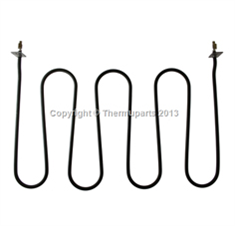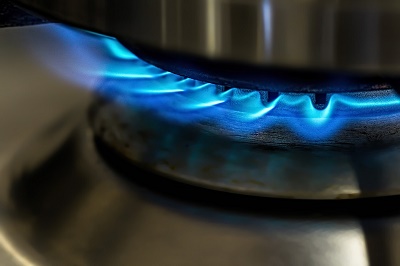
There are few things in life more frustrating than getting home, preparing the dinner that you have been looking forward to all day, only to find that your oven, or more specifically, your grill has stopped working.
There are a number of reasons as to why your grill might have packed up suddenly. Luckily troubleshooting your grill is not a very complicated task. When troubleshooting your grill, it is important that you can correctly identify the problems and understand how to repair the issues. We've put together this guide to help you figure out why your grill is not heating up, usually it's because there's a fault part that needs replacing.
What to check if your grill is not heating up:
- Is anything working on the oven appliance at all?
- Are the hobs working?
- Does the main oven work?
- Is your oven fan running?
- Is the oven lamp running?
- Does your temperature light come one?
Once you have answered yes to all the questions above then we can be certain that it is either one of two possible issues:
Loose Connection
If your cookers grill has broken down, then it could mean that the connection to the heating system has become lose. To check this, firstly make sure you have disconnected the electricity and gas supply to your cooker. You will then need to pull your cooker out to access the electrical components located at back of your cooker, remove the access panelling and from there you should be able to locate the wire that is not connected properly. If you cannot identify the issue, then you will need to call out an electrician, they will be able to identify the issue or, in the worst case scenario, replace your whole grill system.
Heating Element is broken
The most common cause of grills not heating up is because the element has somehow become damaged. By unscrewing the heating element, you will be able to conduct a visual examination of you element to access the damage.
If the heating element is damaged in any way it will need to be replaced. Simply head over to our Replacement Grill Element department, enter in your cooker's manufacturer, and model number, and select the grill element you require.
Here at Cooker Spare Parts, we know that when your cooker has broken down, you want to get it fixed as quickly as possible. Trying to find the right parts can quickly become an overwhelming task, the Cooker Spare Parts team know everything there is to know about all the parts that we sell, so if you run into difficulty trying to find your specific part, don’t hesitate to contact us, we will find the right cooker parts for you in no time.
Gas thermostats on
cookers are designed to help you have complete control over the temperature of
your appliance. Unfortunately, as with any part on your cooker, things can go
wrong and parts may need replacing.
A question we get asked
a lot is why are gas oven thermostats so important? The simple answer is that
they allow you to have maximum control over the temperature of your oven. This
is to ensure you don’t burn anything and don’t cause any unnecessary damage to
other important components on your cooker. The reason they allow you to control
the temperature of your oven is thanks to the thermostat phial that it attached
to them. This phial is in the oven itself and has a small amount of gas in it.
This gas expands and contracts according to the temperature allowing you to
adjust the temperature as you wish.
The most common problem
with oven thermostats that we see is the thermostat phial not registering the
temperature of the cooker correctly, meaning your cooking will be disrupted as
the appliance is unable to tell what temperature your cooker is operating at.
Here at Cooker Spare Parts we have a fantastic
range of oven thermostats for you to choose from that will have your cooker
back to its normal self in no time at all. Take this GTS 1388 for example. It is
one of our bestsellers and this oven thermostat has been manufactured for the
main oven on your gas cooker. Once fitted, your oven will be as good as new,
but more importantly, you will safely be able to control the temperature of
your cooker.
To see our full range
of gas thermostats, simply click here
or go in to the gas thermostats section of our website using the appropriate
filters.
The kitchen appliance industry develops new technologies just as quickly as any other sector, if not more so. Oven manufacturers are constantly coming out with newer, better models, and while that's great news for our dinners, it does mean that previous models can become obsolete very quickly. Manufacturers often discontinue models that are still in common use, and that can be a problem for the people who continue to use the old cookers, particularly when parts need replacing.
Fortunately, if the cooker in your kitchen is a discontinued model, we at Cooker Spare Parts may still be able to provide you with the spares you need to keep it running. We sell a huge number of spare parts for discontinued cookers, so before you give up and buy a whole new appliance, we strongly recommend that you enter your make and model number
here to see if we have what you're looking for. Just because the manufacturer has given up on your particular model doesn't mean that you should follow suit!
Can't find the parts you need? Get in touch with the Cooker Spare Parts team and we'll be happy to help.
Modern gas cookers use an electronic ignition system to light each burner – this system consists of a spark control module installed in the control panel, and an igniter on each individual hob. Whether one hob or several is not working properly, if you follow the following steps we can determine exactly what it is that’s at fault using only a screwdriver.
- Examine the sparks made by each of the hobs and compare them to eachother. A well-functioning ignition will make 3 to 5 blue sparks every second, so if one doesn’t perform as well as the others you know that ignition is bad. Click the button below to see our selection of ignition generators:
- Listen out for the frequency of the sparks – an igniter which works correctly will steadily create 3 to 5 sparks every second, so if they are slower it may be the result of reverse polarity. If you’re in a situation where no sparks are being created whatsoever, the spark module needs replacing. Click the button below to see our selection of spark modules:
- You may also want to check if there is any food stuck to the igniter as this may prevent it from sparking.
- Lastly, you may want to try pulling the cooker away from the wall, unplugging the power cord, and removing the back panel by taking the screws out with a screwdriver. Then examine the spark module for any misplaced wires, or any signs of damage.
If you need a new part for your hob, or if you have any questions for our team of kitchen appliance experts, please feel free to get in touch!

Some people use the hob even more than they use the oven, and so a broken hob can quickly spell disaster in the kitchen. How will you boil your rice, fry your bacon, and simmer your soup now?
Well, given that most cookers have more than one hob, you could always just use one of the non-broken ones. Still, it’s nice to have a fully-functioning cooker – after all, there may well come a time when you’re cooking loads of different things at once, and when that day arrives, you’ll need your hobs to be firing on all cylinders!
With that in mind, here are some tips for diagnosing your poorly hob and getting it back in working order...
Please note that this article is intended for informational use only. Cooker Spare Parts will not be held responsible for any damage that occurs while you are trying to repair your oven. Always unplug your appliance before attempting any repairs, and call a professional if you don’t know what you’re doing.
- Loose connections? Malfunctioning hobs (particularly malfunctioning electric hobs) are quite often caused by loose connections and faulty wiring. Consider contacting a qualified electrician.
- Don't overload it! If you're trying to cook several different things at once - perhaps for some big family dinner - it may be that your cooker simply can't handle another hob's worth of work. Switch everything else off and try the unresponsive hob again; if it works, it may just be that your cooker doesn't have a very good circuit rating.
- Blown fuse? If all the lights went out when your hob stopped working,the problem is likely to be a blown fuse (which caused your electricity supply to trip)
- Out of its element! Some hobs rely on heating elements, just like ovens. If the hob element is dead, you probably just need to purchase a replacement.
- Broken simmerstat? Another part that may need replacing is the simmerstat. This regulates the energy used by your hob, and if it is broken, it may not allow your hob to light at all. You can purchase a new simmerstat here.
- Lid problems? Some cookers (particularly gas cookers) come with glass lids that cover the hobs when they're not in use. The manufacturer will often include a shut-off valve to ensure that the hobs cannot be lit when the lid is down; if this safety valve is malfunctioning, it may stop the hobs from lighting regardless of whether the lid is up or down.
- Give it a clean! The accumulation of grease and gunk can, over time, clog up a gas hob, rendering it unable to function. A good, thorough clean is sometimes enough to get things working again.
- Check your supply! If you use a gas cooker, then the problem may not lie with your appliance at all, but with your gas supply. Call in a tradesperson and get them to check your gas (particularly if you are having problems with other gas appliances in your home).
Important: Only a registered gas-safe engineer can legally perform repairs on a gas appliance.